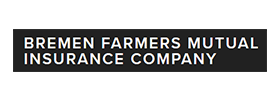Consultants are specially trained or experienced individuals who are paid in exchange for providing professional expertise, usually to do with a specific project, industry, or topic. They often have strong relationships with their clients and successful consultants do well to invest in marketing and networking. What kind of insurance do they need, though? Is professional liability insurance a must for contractors, especially as most of their business revolves around giving advice?
The short answer here is: yes, consultants do need professional liability insurance (also called errors and omissions, or E&O for short.) Due to the potentially sensitive nature of the advice they offer, consultants may be more at-risk than other industries and professionals. Here’s how professional liability insurance (among other coverages!) can help protect you as a consultant.
Professional liability insurance for consultants
In a nutshell, professional liability insurance in the context of insuring consultants protects these professional individuals if they should ever make a mistake, forget something, or fail to offer their promised service to a client. Since the failure on the part of the consultant could cost the client a huge amount, it could result in a lawsuit. In the event of an error or omission, professional liability insurance would provide the consultant with the protection they need.
What kind of mistakes or claims made by a consultant would be covered by E&O?
Here’s a list of some of the kinds of mistakes or errors that professional liability insurance can cover:
Professional Negligence
A mistake or oversight in the consultant’s work, such as not accounting for a specific deadline or budget, could lead to significant financial loss for a client. The client could sue, leaving the consultant faced with hefty legal defence costs.
Legal Defense Costs
Any lawsuit pertaining to an E&O event may be covered by professional liability insurance, including the following expenses: attorney fees, court costs, and settlement expenses.
Misrepresentation
A consultant could be faced with a claim following an incident where the consultant provided misleading information or failed to provide important information to a client.
Breach of Contract
Professional liability insurance can cover claims that arise from a consultant not fulfilling contractual obligations as agreed upon in their consultant-client contract.
Failure to Deliver Services
If the consultant fails to deliver services as promised/either fails to provide services altogether or fails to meet expectations, they may be faced with serious trouble. Professional liability insurance could help in an instance like this.
Is professional liability insurance required for consultants?
Consultants certainly should have E&O insurance, given the extent of what could go wrong, but is it actually required? In some cases, certain insurance coverages are required by law. It depends on the state and industry, of course, but businesses can get in serious trouble if they’re found to be underinsured.
Professional liability insurance is not universally required for consultants, but technically its necessity depends on the industry, client contracts (some contracts will include conditions that the consultant carries their own insurance coverage,) and legal regulations in the consultant’s operating region.
Many clients, particularly larger corporations and government agencies mandate that consultants carry professional liability insurance as part of their contractual agreements. This requirement serves as a safeguard against potential financial losses resulting from mistakes, negligence, or inadequate work performed by the consultant.
While smaller clients might not always require professional liability insurance, having this coverage can significantly enhance a consultant’s credibility and professionalism. Insurance provides a safety net that protects consultants from the financial burdens of legal defense costs, settlements, and potential damages if a client files a lawsuit. In a field where reputation and trust are of the utmost importance, carrying professional liability insurance not only mitigates risk but also shows a commitment to a higher standard of service.
Is professional liability insurance required for consultants?
The cost of professional liability insurance for consultants varies widely based on several factors, including the consultant’s industry, the size and scope of their business, the level of risk associated with their services, and the coverage limits of the policy. On average, consultants can expect to pay between $500 and $3,000 annually for a basic professional liability insurance policy. For higher-risk industries or those requiring higher coverage limits, the cost can be significantly higher.
Like any commercial insurance policy, factors of your business will impact your rates. For example, a consultant in a field which much higher perceived risks, like financial advisory, could see higher premiums than those in less risky fields. Insurance premiums may also be impacted by geographical location (lawsuits being more expensive in some areas) and, of course, policies with higher coverage limits or add-ons will cost more.
To obtain the best rates, we recommend calling our agents here at AHI and discussing your needs today! We’ll go over your existing coverage and how to find you a great rate. After all, you give such great advice–why shouldn’t you get it back? Our tips and suggestions will guide you towards the ultimate policy that will grant you both peace-of-mind and great savings.
































